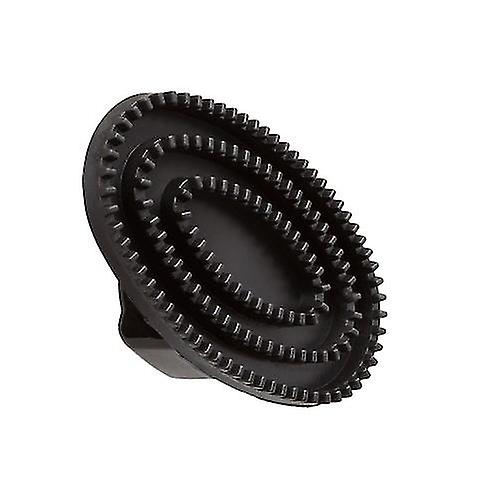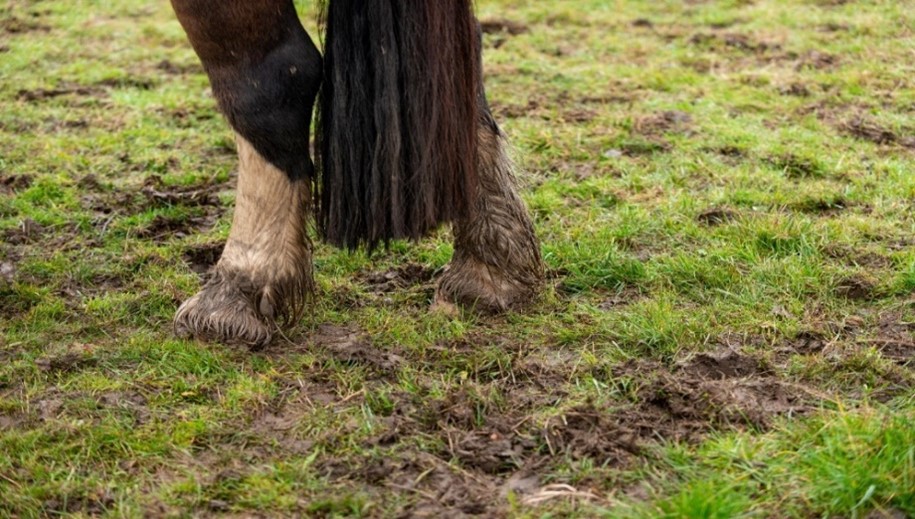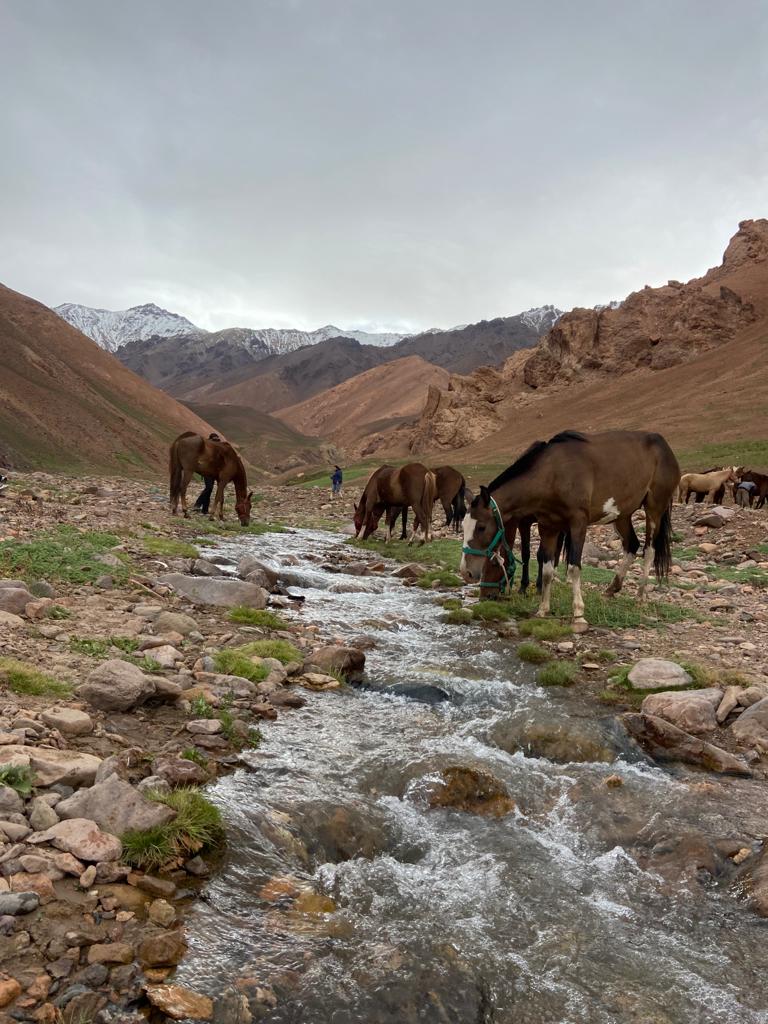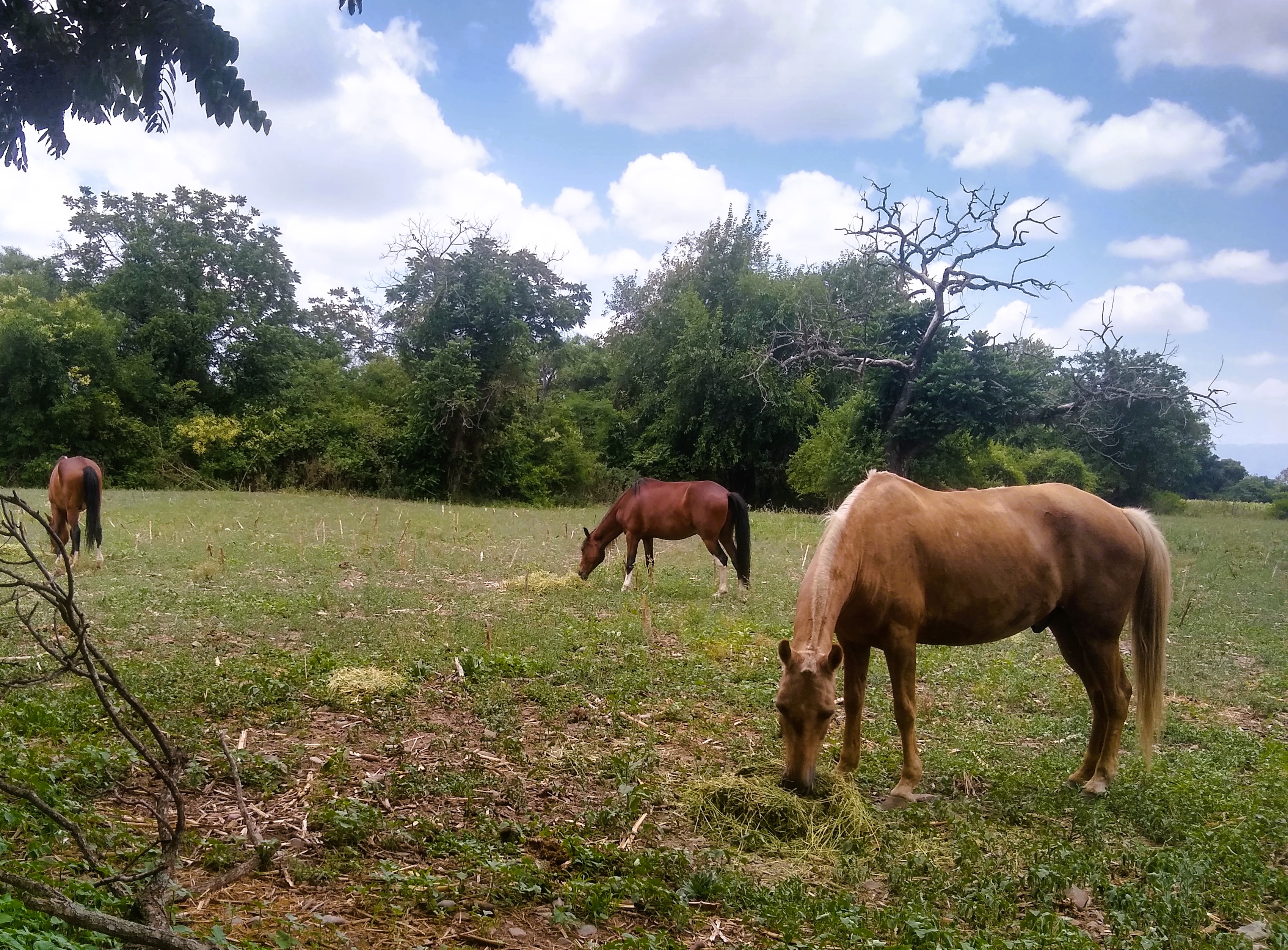WHAT TO DO WITH HORSES IN WINTER
By: Nestor Imberti Posted: 22/08/2024

A practical guide to keep them healthy and fit
During the winter season, paying attention to a few things is important to ensure that your horse is healthy and properly cared for.
Important factors for proper horse care:
- Grooming
- Nutrition
- Checking body condition
- Following the training program
Taking care of the horse’s coat in winter
Horses grow thicker coats to protect themselves in cold weather, making grooming more challenging.
Follow the practical tips below to make grooming easier and more time-efficient.
Your friend, the curry comb
The curry comb is essential for winter grooming and year-round care. A regular bristle brush alone cannot effectively remove mud and dirt from the thick coat of hair.
Start by using the curry comb in circular motions all over the horse's body, including the legs, to loosen accumulated dirt and knots from the long hair.
Once this is done, use the regular bristle brush to remove the loosened dirt.

Remove saddle stains
Even in winter, when your horse gets to work or train, the sweat under the saddle leaves stains on the back.
So when the horse has been working, you should shower it afterward.
If the weather is too cold to get wet, you can turn to this handy resource:
In a bottle, preferably with a sprayer, you should put isopropyl alcohol, i.e. the ethyl alcohol you can get in the pharmacy, and spray the dry sweat stains with it.
Rub and clean the area after moistening the stains with this preparation.
When it dries, the stains should be gone.
Optionally, mix propyl with rosehip oil to make the mixture shinier.
Keep the coat clean
In the animal world, everything happens for a practical reason, and the horse is no exception.
The horse's coat becomes fluffy in winter as a natural adaptation to withstand low temperatures.
This fluffy winter coat helps regulate the horse's temperature in extreme cold and retains the heat generated by digestion.
While you should not remove this protective layer, you can trim the hair around the fetlock area to prevent tangling and clumping.

Would you like to be part of a group with an equestrian soul?
Join the Ampascachi Community. Obtain exclusive benefits for your holidays.
We tell you how to start, train and take care of your horse.
Interviews with direct providers of riding tours around the world.
Opinions of outstanding equine scientists and personalities in the equestrian sport world.
The cleaner and brighter, the better
To prevent dirt and mud from accumulating on your horse's hair, it's a good idea to regularly spray with a grooming product that contains silicone.
This makes the hair slippery and the dirt does not stick to the hair.

However, be cautious and avoid spraying the area where you place the saddle to prevent slipping.
The Pocket Trick
The hair on the horse's tail tends to get very dirty, especially in winter.
If you can't shampoo or care for it for an extended period, it's recommended to braid the tail and leave it in a protective tail pocket.
Additionally, you can apply a little conditioning spray, which will help prevent dirt accumulation and prevent the hair from getting tangled when you remove the braid.
The right nutrition
In the winter, your horse's care routine will generally remain the same in terms of medication, hoof care, and routine veterinary checkups.
However, there are specific feeding and other winter-related recommendations to keep your horse healthy and reduce the risk of colic.
To begin with, it's essential to ensure that your horse has enough water, feed, and, if necessary, supplementary feed, along with regular exercise.
You will also learn how to use the Henneke scale, which helps monitor your horse's condition to take immediate action in case of weight loss.
But first, let's cover the basics.
Water intake
Your horse must have access to plenty of clean water.
Why?
Insufficient water intake can lead to difficulties in food digestion and increase the likelihood of colic, which is caused by intestinal obstruction and can be fatal if not treated properly.
how much water should your horse drink?
In winter, forage and grains have lower moisture content (10 to 15%) compared to fresh summer food that can contain up to 80% moisture.
During the cold season, it's essential for horses to have access to 52 to 55 liters of water per day.
In winter, it's common for drinking fountains to freeze, so to prevent this, you can use a water heater or hot water.
It's recommended to use rubber buckets instead of plastic ones to avoid breakage when removing frozen water.
Maintaining the water temperature between 7 and 15 degrees Celsius is crucial as extreme temperatures can affect the horse's drinking habits.
It's also important to ensure that the horse drinks a sufficient amount of water.
If necessary, you can moisten their food with warm water, hay cubes, and cereals to make a porridge
Symptoms of dehydration in horses include:
- Dry gums and teeth
- Slow digestion
- Dry, hard feces
You can perform a simple gum test to check for dehydration: press the horse's gums until they turn white, then release and monitor how long it takes for them to return to pink.
If it takes longer than 2 seconds, it's a sign of dehydration.
Let's talk about food
Horses have evolved to withstand the cold without any protection other than their coat, as they are warmed in the hindgut by digesting the hay or grass they eat.
Therefore, the best way to keep your horse warm in winter is to provide it with good feed. This also helps protect the horse from colic and ulcers that can result from improper feeding of cereals.
It's important to ensure your horse's teeth are healthy before winter so that it can make the most of the feed.
Dietary supplements - yes or no?
You may have come across commercial brochures or ads promoting supplements for your horse's diet.
Horses can lose weight quickly if not fed properly, especially in winter, and supplements can be useful if handled correctly.
If you're unsure about the nutritional quality of your horse's feed, get it analyzed first to ensure it meets all their needs.
Good hay should provide the right proteins and fibers, generating the heat your horse needs in winter. But if the analysis reveals nutrient deficiencies, your vet can recommend the necessary supplements.
If expecting intense cold, consider adding necessary additives to the food ration.
Remember to use a container or net with small openings for feeding, encouraging your horse to eat smaller portions throughout the day.
This mimics natural feeding behavior.
In very cold weather, a poorly fed horse will start burning body fat, then proteins from muscle mass if the ration is still insufficient.
If your horse continues to lose weight despite a sufficient ration, increase the ration using high-protein hay for heat generation during digestion.
Note that grains provide little heat, and fat provides calories but not heat.
Ensure your horses have salt blocks available in the stable and paddocks year-round, as it's essential for them.
If the horse continues to lose weight, despite your efforts, consult the vet.
Pay attention to the horse's weight loss, especially in winter, and know the indicators that determine its body condition.

How to determine your horse's body condition
To assess your horse's body condition, you can use the Henneke scoring system developed in 1979, which is applicable to all horse breeds.
This system assigns a score based on the horse's condition in various areas, including:
- Neck
- Whithers
- Shoulders
- Ribs
- Spine
- Tail
By evaluating these specific areas, you can place your horse on the Henneke scale.
| Number | Title | Description |
|---|---|---|
| 1 | Cachectic | Visible ribs, pronounced hip and ischial bones, prominent bone structures, withers, shoulder, and neck too noticeable, palpable fat-free tissue. |
| 2 | Very thin | Rounded base of the transverse and lumbar vertebrae and processes, protruding ribs, tail, hip, and ischial bones, distinguishable withers and shoulders. |
| 3 | Thin | Fat cover between vertebrae protrusions, non-palpable transverse processes, fat-covered ribs, non-distinguished ischial bones, accentuated back, shoulders, and neck. |
| 4 | Moderately thin | Faintly distinguishable ribs, protruding tail, indistinguishable hip hump, withers, shoulders, and neck not meatless. |
| 5 | Moderate | Flattened back, palpable but indistinguishable ribs, mainly visible fat around the tail, rounded withers, evenly fused shoulder and neck. |
| 6 | Moderately fat | Fat over the ribs, soft fat around the tail, fat deposits mainly on the sides of withers, behind the shoulders, and along the neck. |
| 7 | Fat | Possible wrinkles in the back, palpable ribs with fat between them, fat around the base of the tail, deposits on withers, shoulders, and neck. |
| 8 | Obese | Wrinkles under the back, ribs difficult to palpate, very soft fat around the base of the tail, withers area full of fat, noticeable thickening of the neck, fat deposits along the inside of the thigh. |
| 9 | Very obese | Wrinkles under the back, visible fat spots on the ribs, protrusions around the base of the tail, withers, behind the back, and along the neck, fat along the inner thighs, and full flanks. |

In general, grades of 5 and 6 are ideal for your horse unless there is a specific need or veterinary requirement.
Maintain your horse at a body condition where you can feel the space between the ribs but not see it.
The Question of Exercise
It is essential to let your horse work in winter.
This helps reduce the risk of cramps.
If your horse is in an open pasture and can move freely, that's ideal. Just ensure it has a shelter.
However, if your horse lives in a stable, exercise is very important. You can take your horse for rides or walks.
If the ground freezes and there is snow, you can use boots for the horse's hooves to improve grip.

Summary
A well-nourished, well-exercised horse will survive the cold season without major issues.
Pay special attention to chills.
Healthy, well-fed horses do not need blankets in winter, as they interfere with the natural development of their coat.
However, if your horse is shivering due to the cold, that shouldn't happen.
In such cases, take it to a stable, cover it with a blanket, and call a veterinarian.
For very old or sick horses with digestive difficulties, using a blanket is recommended.
If you use a blanket, groom the horse and brush the blanket every morning before putting it back on.
It's best to increase the feed so that the horse warms up on its own without the need for a blanket.
Follow these tips to ensure your horse goes through winter without inconvenience and remains healthy and in good shape when warmer temperatures return.
Subscribe to the Ampascachi Community and obtain benefits and exclusive content. Furthermore, we offer free advice on horses and equestrian tourism.
Would you like to delve deeper into the world of horse training?
Download our free guide on Horse training step by step. There we tell you everything we have learned about horse training in more than 25 years of experience.
And if you want to be a professional horse trainer and get field-based training, you should check out our training program. You will have the opportunity to live in our equestrian centre and experience our full training process with young horses.
~
THIS COULD ALSO BE INTERESTING

Dr. Paul McGreevy: specialist in horse behaviour and welfare
We have interviewed Dr. McGreevy to gain insight into equine behaviour, horse welfare and the application of learning theory in equitation science.

Equestrian sports & games: Polo
Do you know the rules of Polo, the oldest of equestrian sports that was played by nomadic warriors of Central Asia? Polo is becoming considerably popular nowadays.

Horseback riding holidays on a Marwari horse in India
Horseback riding in India is exciting, and even more so if you ride on the back of a Marwari horse, an intriguing, noble and brave breed with curved ears.
~
WHAT IS YOUR OPINION? LEAVE A COMMENT
Planning your horse riding holidays?
Join the Ampascachi Community. You will get exclusive advantages and guidance for your next horse riding holiday.


 German
German French
French Spanish
Spanish